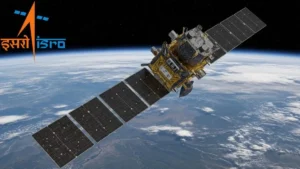European astronomers have made a groundbreaking discovery – the largest stellar black hole in our Milky Way galaxy. Named ‘BH-3’, this celestial behemoth has a staggering mass 33 times greater than our Sun and is located a mere 2,000 light-years away from Earth.
ESA’s Gaia Space Observatory: The Cosmic Detective
The existence of ‘BH-3’ was unveiled by the Gaia Space Observatory, a cutting-edge mission operated by the European Space Agency (ESA). Launched in 2013, the Gaia telescope is designed to map the positions, motions, and characteristics of billions of celestial objects with unprecedented precision.
Scientists detected the presence of ‘BH-3’ when they observed peculiarities in the rotation of a star in the ‘Aquila’ constellation. This star, it turns out, is locked in an orbital dance around the massive black hole, revealing its existence through its gravitational influence.
A Rare and Surprising Discovery
“The surprising thing is that this largest black hole of stellar origin in our galaxy (Milky Way) is not far from the Earth,” said Dr. Pasquale Panuzzo, an astronomer associated with the Gaia Space Observatory. ‘BH-3’ is only the second black hole discovered to be among the closest to our planet.
Most stellar black holes previously discovered in the Milky Way have masses around 10 times that of our Sun. However, ‘BH-3’ stands out as an exceptional case, with a mass more than three times greater than any other stellar black hole found thus far.
A Cosmic Rarity and Future Exploration
Scientists estimate that there may be up to one billion stellar black holes like ‘BH-3’ in our galaxy. However, detecting them is an immense challenge, as most stellar black holes do not have stars orbiting them, making their presence difficult to discern.
The discovery of ‘BH-3’ not only expands our understanding of the diverse population of black holes in the Milky Way but also paves the way for further exploration of these enigmatic celestial objects. With the help of advanced observatories like Gaia, astronomers hope to unravel more secrets about the formation, evolution, and properties of black holes, shedding light on the most extreme environments in our universe.




 ISRO Launches RESPOND Basket 2025, Calls...
ISRO Launches RESPOND Basket 2025, Calls...
 LVM3-M6 Rocket Set to Launch on December...
LVM3-M6 Rocket Set to Launch on December...
 Michaela Benthaus to Make History as Fir...
Michaela Benthaus to Make History as Fir...







